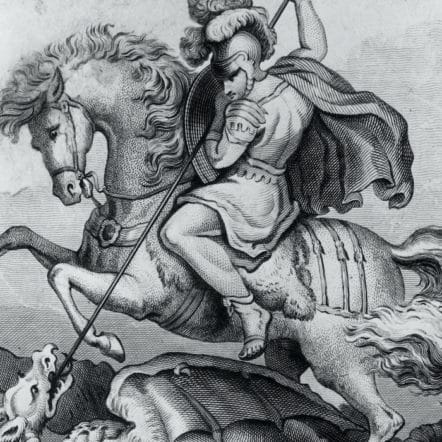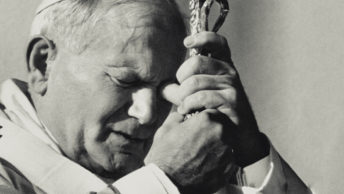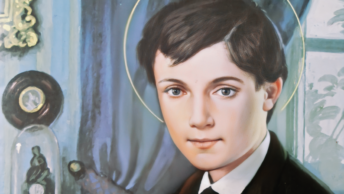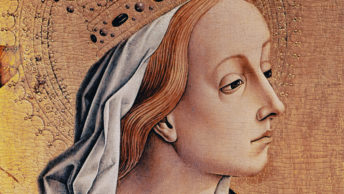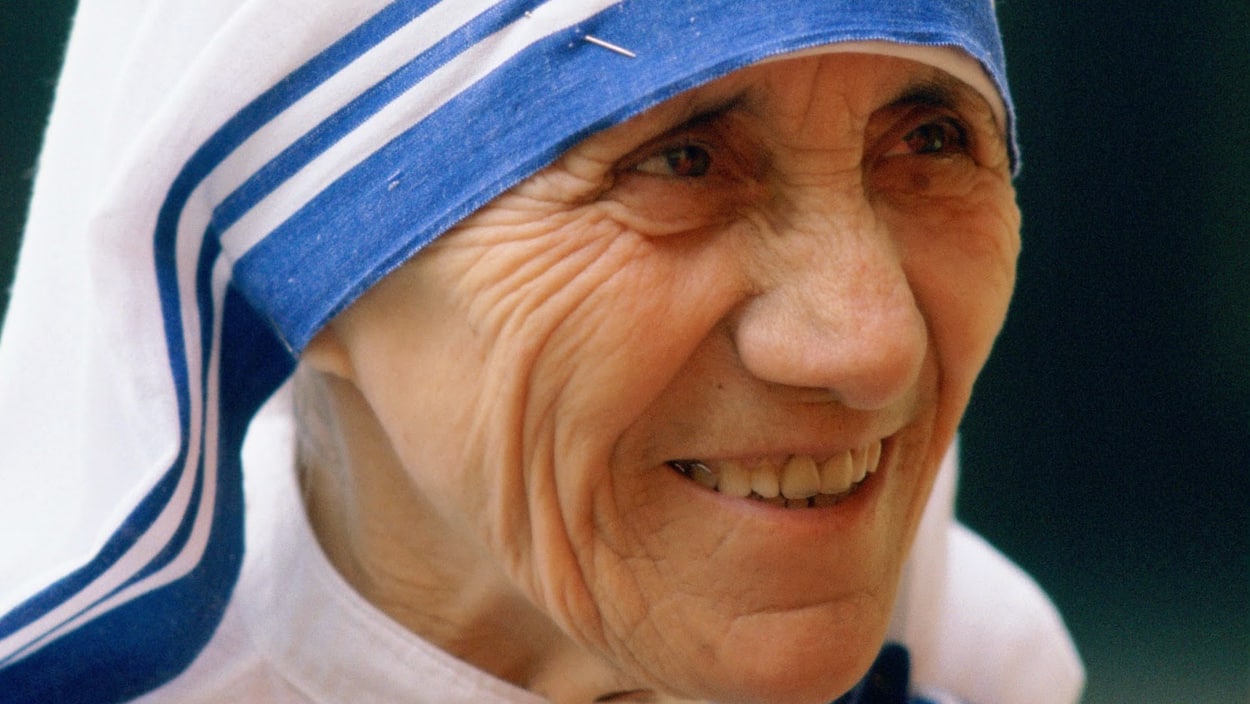On Thursday, 23 April 2020, the universal Church celebrated the great feast of Saint George. Regarding his life, there are many unnecessary historical details. What stands sure, however, is that Saint George is not a myth but a very powerful and actual example of holiness and fruitful response, particularly during this Covid-19 pandemic.
When the name of Saint George comes to mind, many immediately rush in to relate this saint with mythology. This they do because they tend to overemphasize the 11th-century legend wherein the saint killed the dragon. It is true that in the early icons, Saint George is represented as a soldier who is holding the cross of martyrdom. Then, with the passing of the centuries, slowly, the dragon legend creeped into the life of this saint. We know of the multifarious variations of the story. However, its main recounting presents a dragon who is living in a lake and who was worshipped by the unbaptized local people that were so fearful of this monstrous creature that they sacrificed their children with the intention of appeasing him. Finally, it was the turn of the king’s daughter, Elizabeth, to be herself sacrificed. When going toward the dragon to meet her fate instantly appears Saint George, riding his white horse. He prayed to the Father, Son and Holy Spirit and then, he transfixed the dragon with a lance. Afterward Elizabeth led the vanquished creature into city. Instead of getting a treasure, Saint George strongly invited the people to accept Jesus Christ and be baptized. The king wholly concurred with the saint’s idea. He promised to maintain churches, attend church services as well as showing compassion to the poor.
Historically we know that Saint George, an officer in the army of Emperor Diocletian, was born in Cappadocia. He died a martyr’s death in the year AD 303. Yet, the slaying dragon episode discloses how Saint George, protected by the Cross, killed a people-eating dragon. Obviously, from a rational point of view, the dragon story is a complete invention. But, on the spiritual level, this story demonstrates to us a very important life lesson, which, in Saint Paul’s words, is summarized in the following phrase: Do not be overcome by evil, but overcome evil with good (Rom 12:21).
Saint George confronted and defeated the evil, as symbolized in the form of the fire-breathing dragon, because He called the Lord’s Name! He could fight and be totally victorious over such a horrible and infernal adversary, which enslaved and terrified most of the people of his time, because he was riding on the white horse. When interpreting the same vision as depicted in the Book of Revelation, Saint Irenaeus, in the second century, holds that the Horseman on the white horse is Christ himself while his white horse symbolizes the spread of the gospel. Let us not forget that the white colour reminds us of the righteousness of the Bible while in other instances Christ is portrayed as a conqueror. Others enriched and deepened further this interpretation by saying that the Horseman could, in fact, represent the Holy Spirit. The latter descended on the Apostles at Pentecost after Jesus’ departure from Earth. Let us remind ourselves that the appearance of the Lion, in Revelation 5, unravels to us the triumphant arrival of Jesus in Heaven and the first Horseman could personify the sending of the Holy Spirit by Jesus as well as the advance of the gospel of Jesus Christ.
Such a valid and brilliant interpretation of Saint George’s defeat over the dragon, supported of course by the vision of the Book of Revelation, makes a lot of sense in the current coronavirus global scenario. Pope Francis has aptly described the dragon, which is currently assailing us in every way, be it economically, socially, relationally and, even spiritually. In his discourse of Friday, 27 March 2020, the Pope spoke about the existential horrors this dragon, named coronavirus, is inflicting on all of us. In his address at that extraordinary moment of prayer, in an empty Saint Peter’s Square, which symbolically showed the existential emptiness in the hearts of millions of people globally, the Holy Father lamented:
“For weeks now it has been evening. Thick darkness has gathered over our squares, our streets and our cities; it has taken over our lives, filling everything with a deafening silence and a distressing void, that stops everything as it passes by; we feel it in the air, we notice in people’s gestures, their glances give them away. We find ourselves afraid and lost. Like the disciples in the Gospel we were caught off guard by an unexpected, turbulent storm. We have realized that we are on the same boat, all of us fragile and disoriented, but at the same time important and needed, all of us called to row together, each of us in need of comforting the other. On this boat… are all of us. Just like those disciples, who spoke anxiously with one voice, saying ‘We are perishing’ (Mark 4: 38), so we too have realized that we cannot go on thinking of ourselves, but only together can we do this.”
However, in that historic speech, Pope Francis, himself bearing the name of Saint George, Jorge, showed us how to be true γεωργός (georgos) or “earth-workers.” In other words, being true work-worker is translated into concrete acts of solidarity to one another, performed by us, who are paddling within the same boat, and, first and foremost, are the people living on this earth. The Pope must certainly have had in mind that this battle against evil cannot be done by our own but only when fortified by Christ. He must surely have reflected on Saint Paul’s words: I know how to be abased, and I know how to abound; in any and all circumstances I have learned the secret of facing plenty and hunger, abundance and want. I can do all things in him who strengthens me (Phil 4:12-13). Against this ferocious dragon, we too need to heed to the Apostle’s other golden advice:
Put on the whole armor of God, that you may be able to stand against the wiles of the devil. For we are not contending against flesh and blood, but against the principalities, against the powers, against the world rulers of this present darkness, against the spiritual hosts of wickedness in the heavenly places. Therefore take the whole armor of God, that you may be able to withstand in the evil day, and having done all, to stand. Stand therefore, having girded your loins with truth, and having put on the breastplate of righteousness, and having shod your feet with the equipment of the gospel of peace; besides all these, taking the shield of faith, with which you can quench all the flaming darts of the evil one. And take the helmet of salvation, and the sword of the Spirit, which is the word of God (Eph 6:11-17).
Yes! Our loins, breastplate, equipment, shield, and helmet of salvation in this war which, coronavirus has, surprisingly and heinously, waged against us, are, in Pope Francis’ words, “prayer and quiet service;” “the generosity of those who put themselves at risk for the treatment of this pandemic, or to guarantee the essential services to society;” the “help [to] those in need in our neighbourhood,” the “look out for the loneliest people perhaps by telephone or social networks”; the “pray[er] to the Lord for those who are in difficulty … in the world.” By “thought and spirit [we] can go far” since we are constantly aided “by the creativity of love.” Because, “this is what we need today: the creativity of love.” As Saint George’s life doubtlessly and magnificently, shows us, as we are treading within the shadows of Covid-19.

